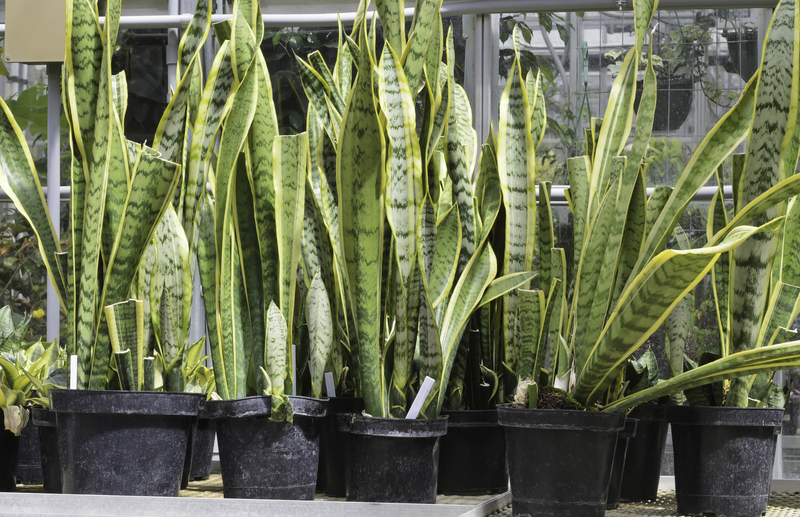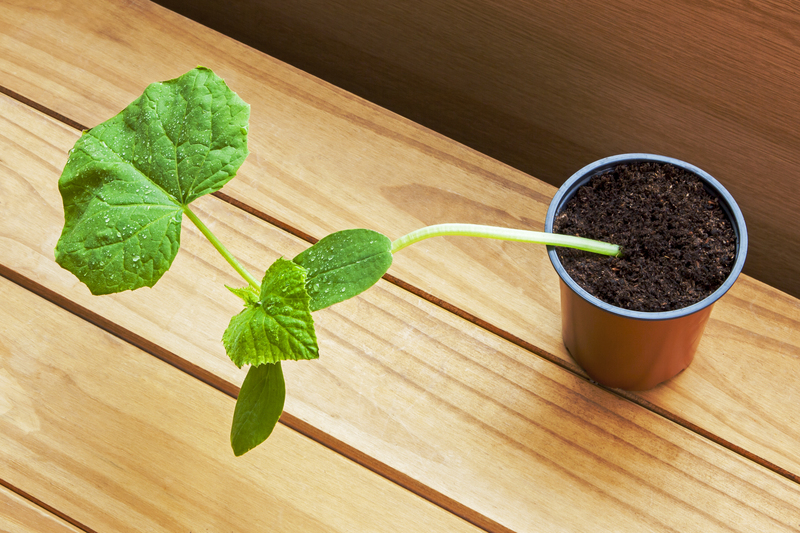Budget-Savvy Home Landscaping: 5 Simple and Sustainable Ideas
Posted on 26/08/2025
Budget-Savvy Home Landscaping: 5 Simple and Sustainable Ideas
Transforming your outdoor space doesn't have to break the bank. Whether you're hoping to increase curb appeal, create a relaxing outdoor retreat, or simply bring a touch of nature closer to home, strategic landscaping is an effective way to achieve your goals. In this comprehensive guide, we'll explore five budget-savvy home landscaping ideas that not only save money but also support sustainability, helping to create beautiful, vibrant, and environmentally conscious gardens - all with minimal financial investment.
Why Sustainable and Affordable Landscaping Matters
Before diving into the practical tips, let's understand the impact of affordable home landscaping choices. A lush yard is attractive, but without proper planning, costs can spiral and environmental impact can be significant. Sustainable landscaping keeps your outdoor space green year-round, conserves resources, and supports local ecosystems, all while keeping costs in check.
- Save Money: Smart plant selection and DIY projects mean less money spent on maintenance, water, and chemicals.
- Conserve Water: Sustainable landscaping techniques reduce water usage and lower utility bills.
- Boost Curb Appeal: Even on a budget, your home can stand out with eye-catching landscape design.
- Support Biodiversity: Native plants and eco-friendly choices attract pollinators and birds.
- Reduce Waste: Composting and repurposed materials minimize your environmental impact.

1. Choose Native and Low-Maintenance Plants
Why Go Native?
Native plants are species naturally found in your region. They're adapted to local soil, rainfall, and pests, so they require far less maintenance than exotic plants, making them ideal for sustainable and budget-friendly garden design.
- Lower Water Requirements: Native plants thrive with normal rainfall, reducing the need for irrigation.
- Decreased Fertilizer and Pesticide Use: Less chemical intervention means lower cost and less environmental harm.
- Habitat for Wildlife: Birds, bees, and butterflies rely on native flora for food and shelter.
Budget-Savvy Tips:
- Research local plant varieties at your county extension office or native nursery.
- Swap seeds or cuttings with neighbors or community groups to fill beds inexpensively.
- Plant perennials - they come back every year, so you'll spend less over time.
By focusing on native landscaping solutions, you build a garden that blooms year after year without recurring expenses or labor-intensive care.
2. Diversify with Mulch and Ground Covers
The Benefits of Mulch
Mulch is a cornerstone of both affordable landscape design and sustainable gardening. When used correctly, mulch:
- Suppresses weeds that compete for nutrients and water.
- Retains soil moisture, significantly reducing watering needs.
- Moderates soil temperature, protecting plant roots in summer and winter.
- Boosts soil health as it decomposes, reducing waste and fertilizer needs.
Affordable Mulch Ideas
- Grass clippings: Use your own lawn clippings as nutrient-rich, zero-cost mulch.
- Wood chips: Local tree services may offer free mulch from trimmed trees.
- Leaf litter: Collect fallen leaves in fall and spread them over beds.
Ground Covers for Sustainability
Low-growing ground cover plants such as creeping thyme, clover, or sedum can replace expensive turf grass. These alternatives are drought-tolerant, require minimal mowing, and support biodiversity.
3. Upcycle and Repurpose to Reduce Costs
Creative Reuse in the Landscape
Sustainable landscaping isn't just about what you grow - it's also about how you build. Upcycling materials keeps items out of landfills and minimizes costs. Here are some inspiring ideas:
- Pathways: Reuse broken concrete, bricks, or old pavers to create rustic garden paths.
- Garden Edging: Wine bottles, old tiles, or salvaged metal can create unique borders for beds.
- Raised Beds: Pallets and reclaimed lumber make excellent, low-cost planter boxes.
- Furniture: Reinvent wooden crates, cable spools, or discarded chairs into outdoor seating and tables.
This kind of resourcefulness is at the heart of budget-savvy home landscaping. It reduces your spending while adding personalized, eco-friendly style to your garden.
4. Start Composting for Fertility and Waste Reduction
Why Compost?
Composting is a truly sustainable landscaping practice that transforms kitchen and yard waste into nutrient-rich soil amendment, helping plants grow stronger with minimal investment.
- Cuts Down on Waste: Keeps kitchen scraps and yard trimmings out of landfills.
- Improves Soil Quality: Adds essential nutrients and beneficial microbes.
- Reduces Need for Chemical Fertilizers: Natural compost feeds your garden for free.
Getting Started
Building a compost bin can be as simple as stacking pallets, drilling holes in a repurposed barrel, or buying a low-cost compost tumbler.
- What to compost: Fruit and veggie scraps, coffee grounds, eggshells, yard waste, shredded paper (no glossy print).
- What to avoid: Meat, dairy, oily foods, and invasive weeds.
With consistent composting, your soil quality improves each season - and you'll notice the savings on fertilizer costs!
5. Design with Water Conservation in Mind
Smart Watering Strategies
Water is a precious resource. With a bit of foresight, you can save water (and money) while keeping your landscaping vibrant.
- Drip Irrigation: Install drip hoses or emitters at soil level to target water where it's needed and reduce evaporation.
- Rain Barrels: Collect rainwater from roofs to water your garden for free.
- Group Plants by Water Needs: Place drought-tolerant species together and thirsty plants together, so you can irrigate efficiently.
- Water Early or Late: Watering in the early morning or evening minimizes loss from the midday sun.
Xeriscaping for Affordability
Xeriscaping is a landscaping style designed specifically for low water use. By replacing thirsty lawns with drought-tolerant species, gravel, and mulch, you can cut water costs drastically and enjoy a low-maintenance landscape.
Frequently Asked Questions on Home Landscaping on a Budget
- Q: How do I start landscaping if I have zero experience?
- A: Start small. Choose a manageable area, use native plants, and try a few affordable changes like mulch or ground cover. Expand your projects as you gain confidence.
- Q: Are perennials better than annuals for low-cost landscaping?
- A: Yes! Perennials return year after year, saving money and effort over time. Select varieties that thrive locally for best results.
- Q: How long does it take to see the benefits of composting?
- A: Most compost is ready in 3-6 months, depending on your materials and process. Start now; your soil will be richer by the next planting season.
- Q: Do I need expensive tools or equipment?
- A: No! Basic landscaping work only requires simple hand tools. Borrow or buy used to save even more.
Additional Tips for Affordable, Sustainable Landscaping Success
- Plan First: Sketch your design to avoid over-buying and to spot free or upcycled resources you can use.
- Buy in Bulk When Possible: Some nurseries offer discounts for larger purchases or community orders.
- DIY Where You Can: Simple projects like laying mulch or planting beds don't require professional help.
- Get Involved in Community Swaps: Many neighborhoods host plant and seed exchanges in spring and fall.
- Embrace Imperfection: Sustainable landscaping focuses on resilience and biodiversity, not on perfectly manicured lawns.

Conclusion: Enjoying Beautiful Landscapes for Less
Budget-savvy home landscaping is achievable for everyone. With the right approach, you can create a sustainable, low-cost garden that celebrates local ecology and minimizes maintenance. Focus on native plants, mulch and ground covers, creative reuse, composting, and water-smart designs to maximize both environmental impact and money saved.
Transform your garden into a haven for people and wildlife - it all starts with small, simple steps. The most beautiful landscapes are not always the most expensive, but the most thoughtfully planned and lovingly maintained.
Ready to make your dream landscape a reality? Start with any of these five sustainable landscaping techniques and watch your outdoor space-- and your savings -- grow!
Related Resources
Implement these budget-friendly and sustainable landscaping ideas to enjoy a greener, more inviting home--for yourself, your family, and the planet.

